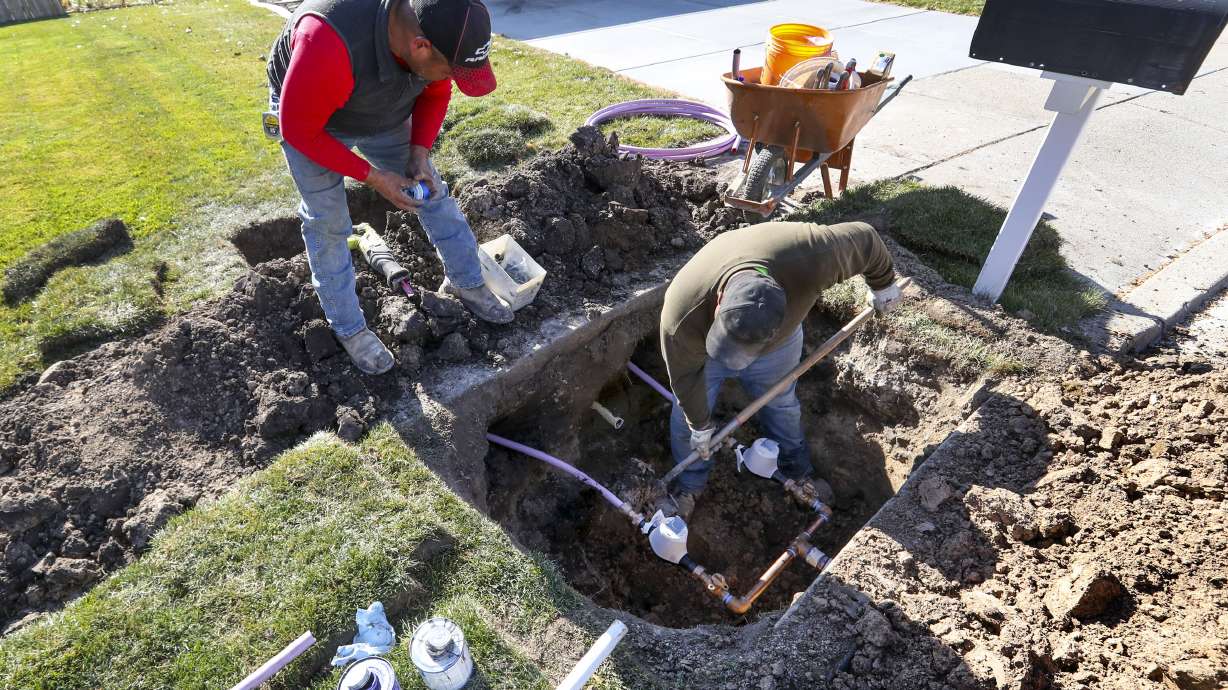Estimated read time: 4-5 minutes
This archived news story is available only for your personal, non-commercial use. Information in the story may be outdated or superseded by additional information. Reading or replaying the story in its archived form does not constitute a republication of the story.
SALT LAKE CITY — Utah's water officials argue that secondary meters are essential during a long-term severe drought — like the state is currently in — because they provide accurate numbers to show how much water governments, businesses and individuals use for secondary needs.
These meters track all the water that doesn't meet safe drinking standards, as defined by the Environmental Protection Agency. Cities, water districts and irrigation companies can all receive secondary water that ultimately goes toward irrigation systems, lawns, gardens, parks, landscapes or any other open area.
The Utah Department of Natural Resources estimates that those who have secondary meters have been able to reduce water consumption by 20% to 30%. The agency also estimated in 2018 that people and entities with unmetered connections consumed about 50% more than people with them.
However, not many people in Utah have them and that's a problem. Only about 15% of about 260,000 secondary water connections in the state have meters, according to the department.
"We can't expect people to conserve if they don't know how much they're using," said Candice Hasenyager, director of the Utah Division of Water Resources, in a statement Tuesday.
This is why state legislators approved a bill that opens over $250 million in funds over the current and upcoming fiscal years to supply grants to secondary water providers so they can speed up the process to install secondary meters.
The initial application period for this program, through the Utah Division of Water Resources, began on Friday and will continue through May 15.
"This commitment from the Legislature will fast-track Utah's water conservation efforts and sends a strong signal that using this precious resource wisely is critical," said Brian Steed, executive director of the Department of Natural Resources.
House Majority Assistant Whip Val Peterson, R-Orem, who sponsored HB242, said the point of the project is to help chip away at the backlog of secondary water meters. Peterson added that Utah's population is still projected to grow by 66% over the next several decades at the same time the drought situation is happening.
The bill also requires that secondary water suppliers must have a meter on any secondary water connections by the start of 2030.
"This is really about us making sure we're doing something for the generations that are ahead of us — 30 years from now, 20 years from now," Peterson explained on the House floor when first introducing the bill in February.
The grant aims to ease the financial burden associated with installing these water meters and the funding for it comes from the money the state received from the American Rescue Plan Act. Every retrofitted secondary meter costs about $2,000 to install; however, that number can be higher for installations in people's backyards, according to the state.
Secondary water providers, like governments or public utility companies, can apply for a grant and receive up to 70% of project costs covered in grants. There are also low-interest loan funds available to help any local cost-share burdens.
Despite $250 million made available for secondary meters, there's is plenty of work to be done to cover the gap. The state estimates that it would cost $450 million to $675 million to install meters to cover the remaining 85% of unmetered secondary water connections.
Still, every new metered connection is crucial as the state still deals with a severe drought and a below-average snowpack now, and likely issues in the future.
Over one-third of Utah is listed in an extreme drought while a little more than 98% of the state is listed as being at least in a severe drought, according to the U.S. Drought Monitor.
The statewide snowpack also began to melt early. It has melted 2.2 inches of water overall from the peak of 12 inches on March 22, according to the Natural Resources Conservation Service. As of Tuesday, there's still an average of 9.8 inches of water left in the mountains statewide — about 69% of the average for this time of the year.
The snowmelt should help with the state's reservoirs; the state's reservoirs were only at 52% capacity on March 7. However, with some melt going into the ground, it's unclear how full the reservoirs will get this year — hence where the meters come into play.
"Installation of secondary meters can provide both the water provider and the water user with accurate water information so they can make informed waterwise decisions," Hasenyager said.
Even if conservation isn't your thing, Steed adds there's a financial incentive behind secondary meters.
He argues that it ultimately costs more to keep secondary lines unmetered than it does to install meters.
"Installing secondary meters yields the biggest bang for the buck when you look at the amount of water saved compared to the cost of the meters," he said.










